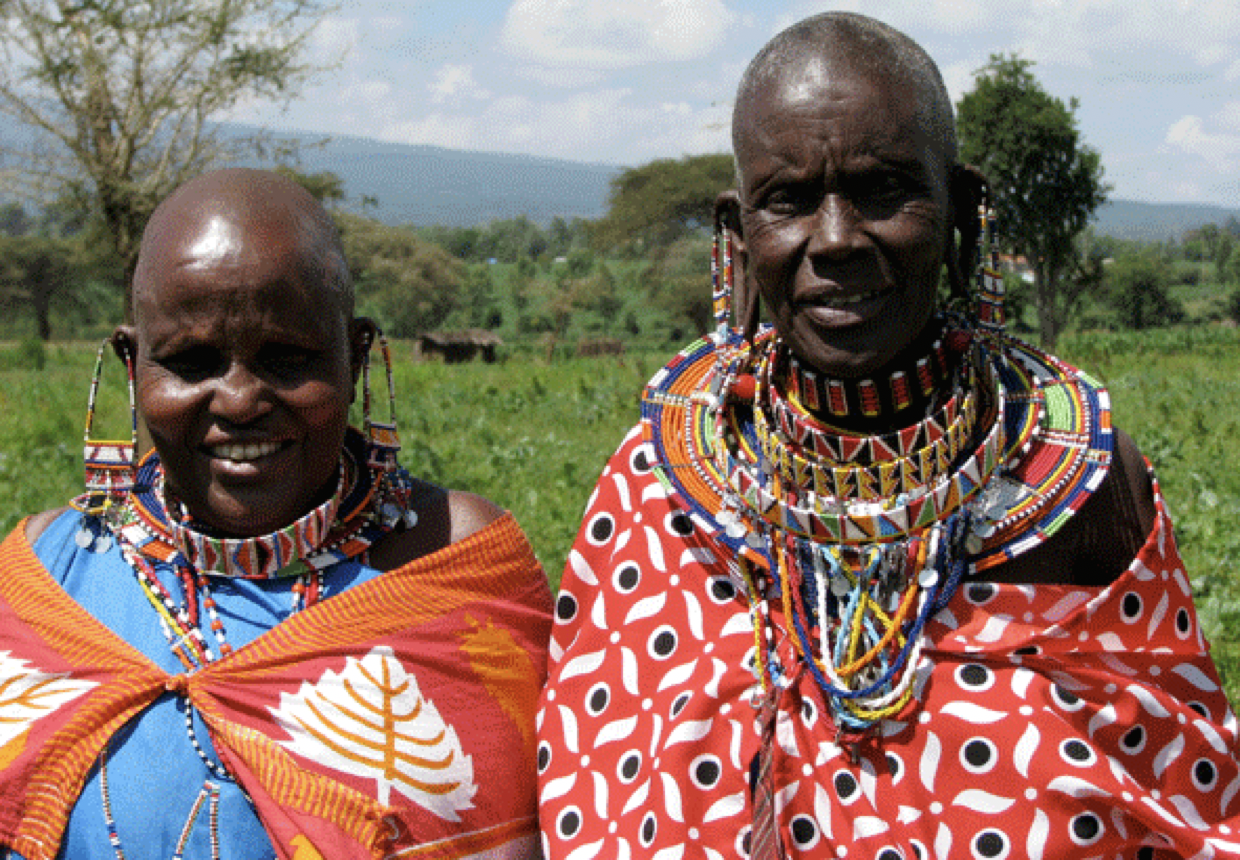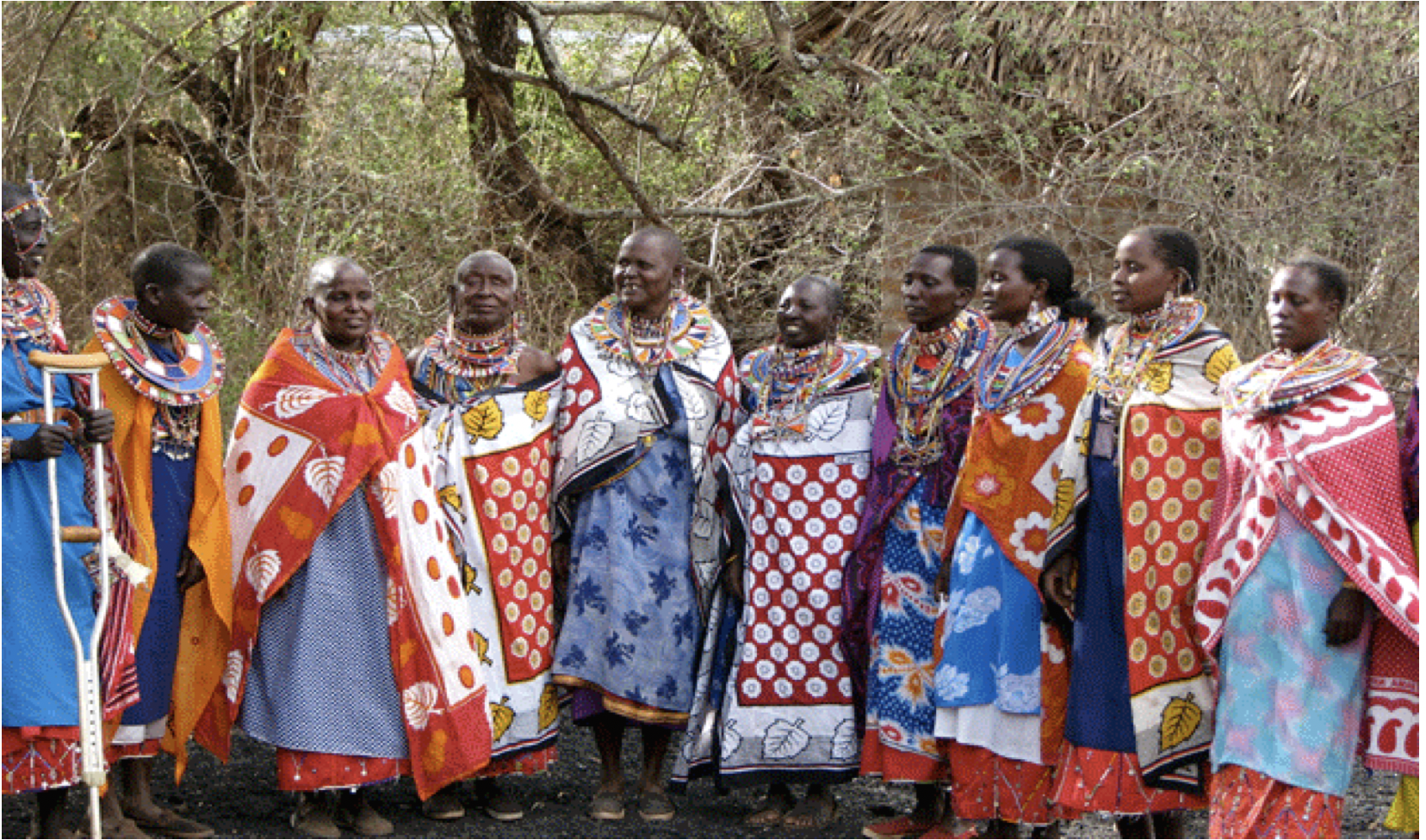The Desired Effect: The Merrueshi Women's Cooperative
The Merrueshi Women Co-operative was established by a small group of Maasai women who are dedicated to actively participate in the business, social and cultural activities in Merrueshi village. The group is comprised of married women and widows and the create the most amazing beaded works; their creativity and their labor is unmatched.
The Maasai people of East Africa live in southern Kenya and northern Tanzania along the Great Rift Valley on semi-arid and arid lands. The Maasai occupy a total land area of 160,000 square kilometers with a population of approximately one-half million people. However, many Maasai see the national census as government meddling and often miscount their numbers to census takers.
The Maasai are a semi-nomadic people who lived under a communal land management system. The movement of livestock is based on seasonal rotation. Contrary to many claims made by outsiders, particularly the Hardinian school of thought, this communal land management system allows us to utilize resources in a sustainable manner. Each section manages its own territory. Under normal conditions, reserve pastures are fallowed and guarded by the warriors. However, if the dry season becomes especially harsh, sections boundaries are ignored and people graze animals throughout the land until the rainy season arrives. According to Maasai traditional land agreement, no one should be denied access to natural resources such as water and land.
The Maasai economy is increasingly dependent on the market economy. Livestock products are sold to other groups in Kenya for the purchase of beads, clothing, and grains. Cows and goats are also sold for uniforms and school fees for children. It is now common to see young Maasai men and women in major towns and cities of Kenya selling, not just goats and cows, but also beads, cell phones, charcoal, grain among other items. The entrepreneurial spirit is something new in our society
Mission: Merrueshi Women’s Cooperative
To empower ourselves and improve our community through income-generating activities such as handmade crafts, folklore, and livestock production. The long-term goal is to alleviate poverty and other socio-economic and cultural challenges facing Maasai women daily.
Maasai women will always step forward and give each other a helping hand when the needs arise. They help each other through weddings, hut building, and maternal care. Before a wedding, for example, the women will come together and assemble the bridal costume. Some will make beaded ornaments while others will make a traditional and ceremonial garment for the bride-to-be.
In Maasai society, no woman builds a house alone without the company of others. Some will bring sticks while others will bring water needed to plaster the hut. These are centuries-old traditions that Merrueshi women would like to keep going for generations to come.
The women also help each other with designs and ideas for unique beadwork items sold in the women's cooperative shop at Maasai Cultural Center. When you sit at the table with them you’ll notice a great deal of love and support these women have for one another. It is common to find them gathering under a large acacia tree in the village discussing children and issues that women care most.
Maasai women are traditionally artists. Each woman has vast skills and knowledge to create intricate beadwork that dominates Kenya’s fashion shows. The irony is that very few Maasai women have the ability to generate income from their artistry.
MAASAI Beadwork is worn according to the age and social status of an individual
Unmarried females wear large flat beaded discs around their necks when dancing as a sign of grace and flexibility. An engages woman wears a very elaborate and heavily beaded neckpiece on her wedding day and once married she wears a long necklace with blue beads. Those of higher social status wear more colorful beads.
DIFFERENT BEAD COLORS HOLD SPECIAL MEANING





